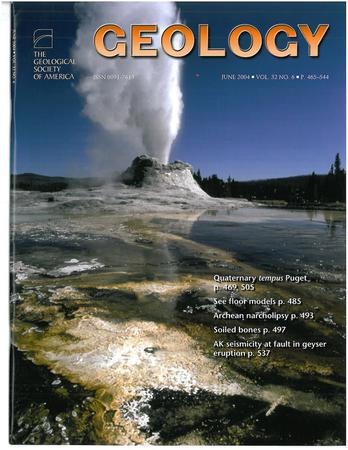大Si同位素分馏揭示了贫硅碳酸盐中石英的形成机理
IF 4.8
1区 地球科学
Q1 GEOLOGY
引用次数: 0
摘要
碳酸盐岩是最贫硅的火成岩,与稀土元素(REE)矿床关系密切,其中低SiO2活性被认为有助于经济的REE矿化。然而,石英提出了一个悖论,通常被视为硅饱和代理,它出现在一些巨大的碳酸盐岩或与碳酸盐岩相关的REE矿床中,如中国白云鄂博和美国加利福尼亚州山口的矿床。这里使用硅同位素分析对碳酸盐岩中石英的起源提供了独特的看法。白云鄂博碳酸盐岩和REE矿石中的石英颗粒通常以包裹体的形式存在于萤石中,或与萤石共存,从而暗示了氟在其热液成因中的重要性。石英颗粒的δ30Si值变化非常大,在二次离子质谱分析中变化范围为-4.55‰至1.71‰,这在中高温岩浆热液过程的其他地方没有记录。理论计算表明,在Si-O和Si-F键的形成和破坏过程中,由于它们的键强度不同,可以产生如此大的Si同位素分馏。这些结果表明流体中存在氟化硅物质,并突出了氟在贫硅碳酸盐岩中石英形成中的作用。含有氟化硅物质的碳酸盐岩岩浆的出溶流体可能会降低二氧化硅活性,这有可能阻碍稀土元素融入岩浆磷灰石,从而促进后期热液稀土元素富集和稀土矿体的形成。本文章由计算机程序翻译,如有差异,请以英文原文为准。
Large Si isotope fractionation reveals formation mechanism of quartz in silicon-poor carbonatite
Carbonatites, the most silica-poor igneous rocks, have a close relationship with rare earth element (REE) ore deposits, where low SiO2 activity is considered to contribute to economic REE mineralization. However, a paradox is raised by quartz, commonly regarded as a Si-saturation proxy, which occurs in some giant carbonatites or carbonatite-related REE deposits such as those at Bayan Obo, China, and Mountain Pass, California, USA. A unique perception for the origin of quartz in carbonatites is provided here using Si isotope analysis. Quartz grains from the Bayan Obo carbonatite and REE ores commonly occur as inclusions in fluorite, or they coexist with fluorite, thus implicating the importance of fluorine in their hydrothermal origin. The quartz grains have remarkably large variations in δ30Si values, ranging from −4.55‰ to 1.71‰ in secondary ion mass spectrometry analyses, which have not been documented elsewhere in high- to medium-temperature magmatic-hydrothermal processes. Theoretical calculations demonstrate that such large Si isotopic fractionation can be generated during the formation and breakdown of Si-O and Si-F bonds due to their difference in bond strength. These results imply the presence of silicon fluoride species in the fluid and highlight the role of fluorine in quartz formation in silicon-poor carbonatite. The exsolved fluids from carbonatite magmas containing silicon fluoride species may decrease silica activity, which has the potential to impede incorporation of REEs into magmatic apatite, and thus facilitate late-stage hydrothermal REE enrichment and formation of REE orebodies.
求助全文
通过发布文献求助,成功后即可免费获取论文全文。
去求助
来源期刊

Geology
地学-地质学
CiteScore
10.00
自引率
3.40%
发文量
228
审稿时长
6.2 months
期刊介绍:
Published since 1973, Geology features rapid publication of about 23 refereed short (four-page) papers each month. Articles cover all earth-science disciplines and include new investigations and provocative topics. Professional geologists and university-level students in the earth sciences use this widely read journal to keep up with scientific research trends. The online forum section facilitates author-reader dialog. Includes color and occasional large-format illustrations on oversized loose inserts.
 求助内容:
求助内容: 应助结果提醒方式:
应助结果提醒方式:


